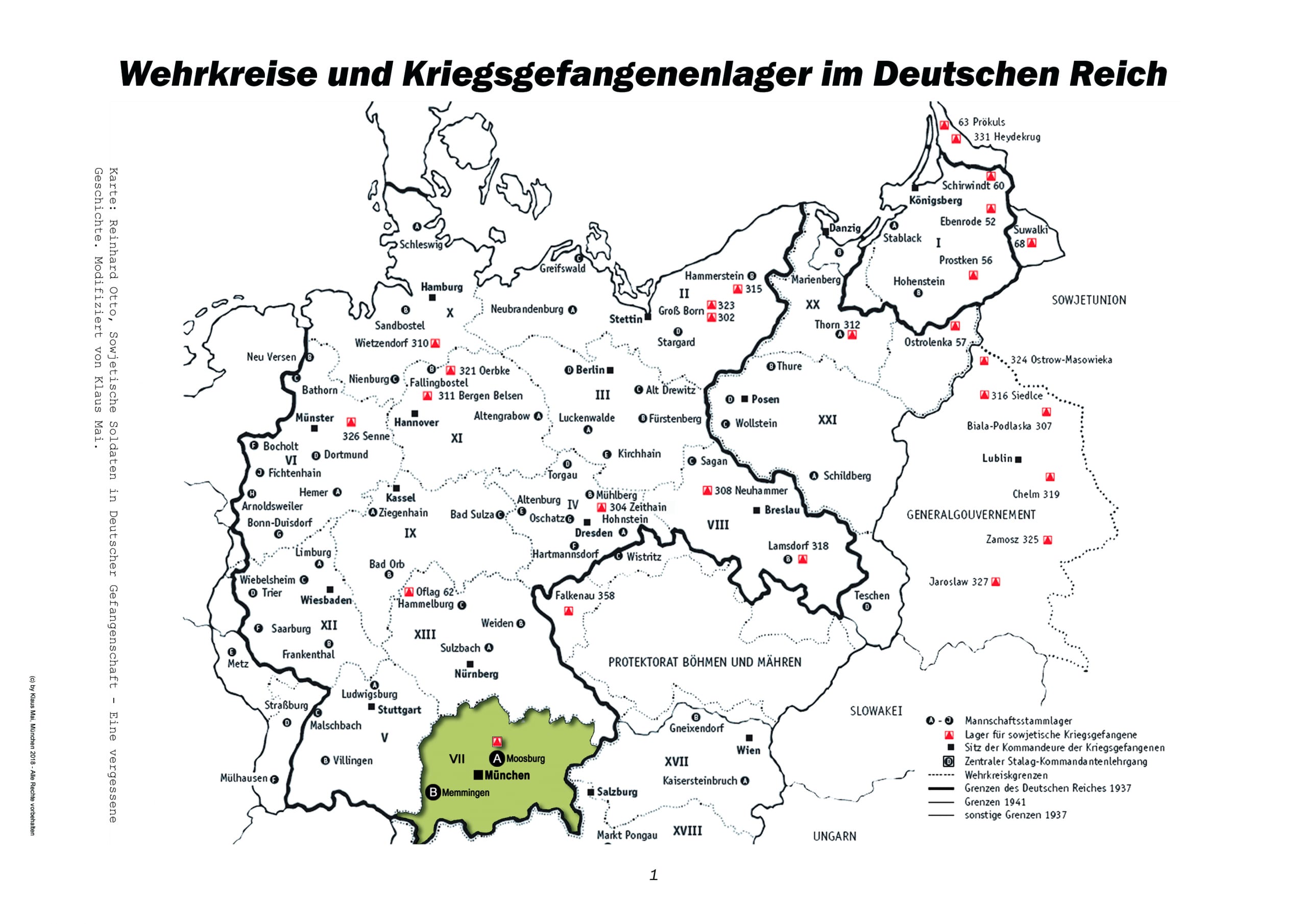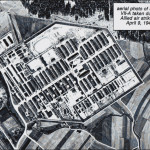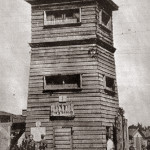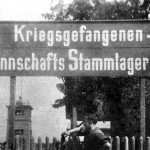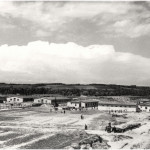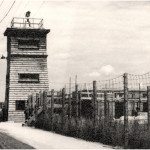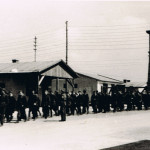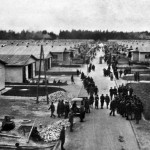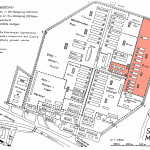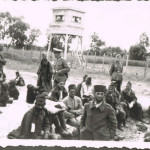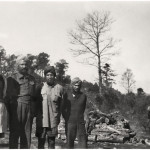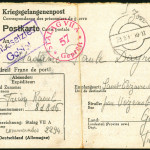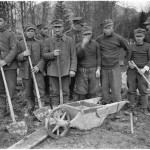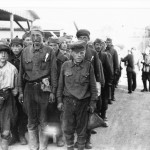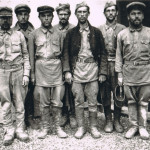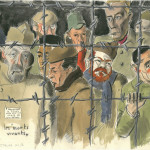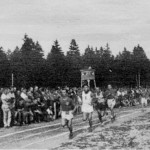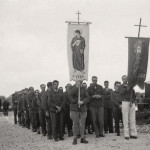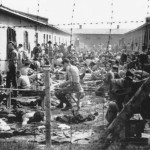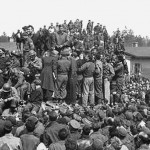Prisoner of war camp Stalag VII A
Military districts (Wehrkreis) and main camps (Stalag)
The Wehrmacht divided the German Reich into military administrative areas, the so-called Wehrkreise. The respective Wehrkreis administrations were responsible for setting up the POW camps and organizing the work assignments of the prisoners. Thus, one or more "Stammlager" (Stalag) for the soldiers and sergeants were established in each Wehrkreis. There, the prisoners were registered with personnel cards on which their personal data as well as all subsequent deployments, stays, cases of illness, and, if applicable, deaths and burials were recorded. This resulted in more than 40 smaller and larger Stalags in the Reich.
Wehrkreis VII comprised the southern Bavarian area, and the central authority was based in Munich.
Later (1940) another smaller camp, the Stalag VII B in Memmingen was established for the work assignment of prisoners of war in Bavarian Swabia.
Here you can find more information about this camp from the Memmingen city archive.
In addition, there were the officers' camps (Oflag), in which officers were registered separately. They had a different status and, according to international law, were not allowed to be used for forced labor. For Wehrkreis VII, the Oflag VII A was located in Murnau. From 1939 to 1945, up to 5,000 officers and generals of the Polish army were temporarily interned here.
The Stalag VII A in Moosburg
In September 1939, shortly after the outbreak of World War II by Hitler's Germany, the POW camp STALAG VII A (Stammlager A in military district VII) was established in the north of the town of Moosburg. The first POWs to arrive at the camp in October 1939 were initially housed in tents. From 1940, permanent barracks were erected to house them.
The camp, which was originally planned for 10,000 prisoners, is said to have been occupied by up to 70,000 prisoners from numerous countries at the end of the war. The historical sources give different figures on this. In any case, a total of more than 150,000 POWs were registered in Stalag VII A, one of the largest German camps. From here, they were distributed into labor detachments in industry, trade and agriculture in military district VII (southern Bavaria) and used for forced labor. The camp was run under the direction of the Wehrmacht largely in accordance with international agreements (Geneva Convention).
Reading tip: In our brochure „Stalag VII A – Ein Kriegsgefangenenlager 1939-1945“ (Stalag VII A - A prisoner of war camp 1939-1945), historian Dr. Dominik Reither describes the various organizational and living conditions in the camp (with source references).
Significantly worse off, however, were the Soviet prisoners, who were not protected by this international legal status and were treated as an ideological enemy. They received less food and medical care and were not supported with aid supplies from the Swiss Red Cross. The dead in the POW cemetery also bear witness to this. About 800 of the approximately 1000 buried were Soviet prisoners, most of whom died from debilitation and disease.
Reading tip: Four local authors investigate the special situation of Soviet prisoners of war. The book, „Auf den Spuren verlorener Identitäten“ (On the Trail of Lost Identities) not only traces historical sources to the names of the deceased, but also follows the subjective views of prisoners and guards in the camp.
On April 29, 1945, Moosburg and the local POW camp Stalag VII A were liberated by a unit of the 14th Armored Division of the United States Army. The handover of the camp by the camp commander, Colonel Otto Burger, took place without a fight and without bloodshed after a secret agreement with the approaching Americans.
Detailed information can be found here in our multilingual leaflets.
Here is the layout of the camp:


